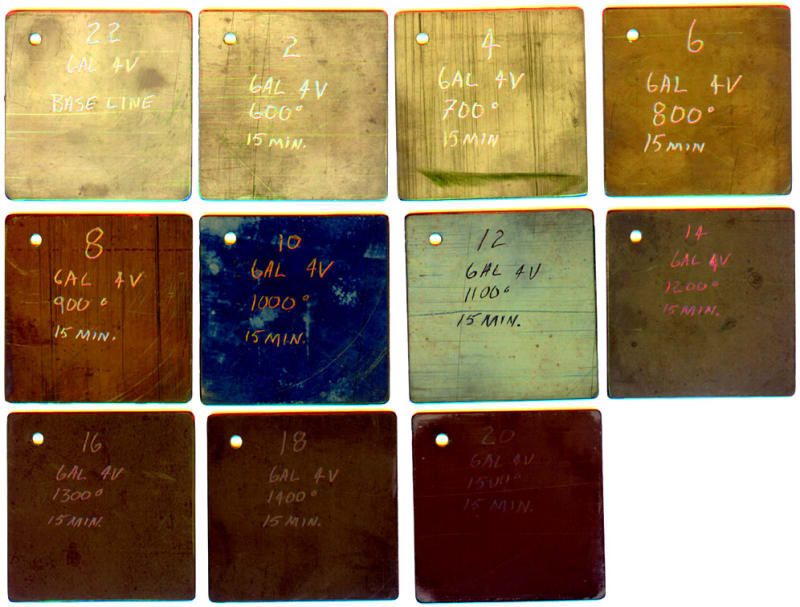kingnero
Mechanical
- Aug 15, 2009
- 1,775
In this thread I read:
I have had problems in the past with bend test on Ti butt welds (both CP as Ti-Al-V alloy). ISO standards and AWS mentioned different bend radii (ISO being much smaller thus harder to achieve), which put me from the start in a difficult position.
I have had contact with a Ti producer, which has led to some interesting tidbits that ultimately resolved the bend test difficulties, but I still have some questions regarding oxidation/embrittling. I was under the impression that any oxigen would embrittle the base material rather deep. The above quote (which I don't doubt!) indicates that the brittle layer is superficial. Heat treatment doesn't rise to the same temperatures as welding clearly, so that might have something to do with it.
Welds were done using high-purity argon in a purge chamber with continuous monitoring of impurities/O2, in the order of 0 - 20 ppm. Everything cleaned, filed, degreased using pure alcohol, filler rods wiped, ... so the only adverse situation was that the parts were small and heat up a lot. Large grains, very brittle welds.
Can anybody suggest some litterature where this metallurgical phenomenon is discussed in detail? I'm not in a hurry to know all the details, but it might come handy for a next time...
I'm also not looking for a specific solution, I'm more interesting in gaining some general knowledge about Ti (and Ti welding).
Thanks!
EdStainless said:You acid etch the white layer off of these parts much like you etch the brittle oxide layer off of heat-treated Ti parts.
I have had problems in the past with bend test on Ti butt welds (both CP as Ti-Al-V alloy). ISO standards and AWS mentioned different bend radii (ISO being much smaller thus harder to achieve), which put me from the start in a difficult position.
I have had contact with a Ti producer, which has led to some interesting tidbits that ultimately resolved the bend test difficulties, but I still have some questions regarding oxidation/embrittling. I was under the impression that any oxigen would embrittle the base material rather deep. The above quote (which I don't doubt!) indicates that the brittle layer is superficial. Heat treatment doesn't rise to the same temperatures as welding clearly, so that might have something to do with it.
Welds were done using high-purity argon in a purge chamber with continuous monitoring of impurities/O2, in the order of 0 - 20 ppm. Everything cleaned, filed, degreased using pure alcohol, filler rods wiped, ... so the only adverse situation was that the parts were small and heat up a lot. Large grains, very brittle welds.
Can anybody suggest some litterature where this metallurgical phenomenon is discussed in detail? I'm not in a hurry to know all the details, but it might come handy for a next time...
I'm also not looking for a specific solution, I'm more interesting in gaining some general knowledge about Ti (and Ti welding).
Thanks!


![[bigsmile] [bigsmile] [bigsmile]](/data/assets/smilies/bigsmile.gif)